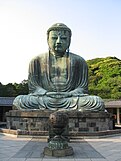Wikipedia:Main Page history/2023 September 20
From today's featured article
Did you know ...
- ... that clown Julia Masli (pictured) found success by shaking hands with audience members using her feet?
- ... that in 2021, Tropical Storm Danny became just the third named system to make landfall in South Carolina in the month of June since 1867?
- ... that Salar de Pedernales in Chile features dark slope streaks resembling dark slope streaks on Mars?
- ... that House Gospel Choir's very first gig was at Glastonbury?
- ... that William Nixon performed abortions in the NHS before the passing of the Abortion Act 1967?
- ... that three American bombers were downed over the Romanian village of Suslănești in May 1944?
- ... that the Lava Ridge Wind Project proposal has faced opposition for putting 740-foot-tall (230 m) wind turbines next to the former Minidoka internment camp?
- ... that Georgia's racketeering law has been used to prosecute an assisted-suicide group, schoolteachers in a cheating scandal, a fake dentist, and Donald Trump?
In the news
- In a breach of the 2020 ceasefire agreement, Azerbaijan launches a military operation in Nagorno-Karabakh.
- Evika Siliņa (pictured) takes office as Prime Minister of Latvia.
- In Hanoi, Vietnam, a fire at an apartment building kills at least 56 people.
- The FIBA Basketball World Cup concludes with Germany defeating Serbia in the final.
On this day
- 1498 – A tsunami caused by the Meiō earthquake washed away the building housing the statue of the Great Buddha (pictured) at Kōtoku-in in Kamakura, Japan; the statue has since stood in the open air.
- 1792 – The French Army achieved its first major victory of the War of the First Coalition at the Battle of Valmy.
- 1967 – L. Ron Hubbard, the founder of Scientology, announced the story of Xenu in a taped lecture sent to all Scientologists.
- 1997 – Hurricane Erika, the strongest and longest-lasting hurricane of the 1997 Atlantic hurricane season, dissipated after causing flooding and power outages throughout Puerto Rico.
- Susanna Rubinstein (b. 1847)
- Edith Rogers (b. 1894)
- Davidson Nicol (d. 1994)
- Victor Henry Anderson (d. 2001)
Today's featured picture
|
The 1990 Nepalese revolution was a multi-party movement that brought an end to absolute monarchy and the beginning of constitutional monarchy, eliminating the panchayat system in Nepal. The revolution began in February 1990 following an alliance between two opposition groups: the Nepali Congress and the United Left Front. In the subsequent weeks, the movement became increasingly large and dangerous as thousands of students marched against riot police and hundreds were arrested and injured. The movement called for bandhs (a kind of general strike) that quickly spread across the country. In early April, 200,000 people marched to Kathmandu in protest of the monarchy. Over the course of several days, police shot and killed dozens as protesters demanded a restoration of the 1950s-era multiparty democracy system. Protesters surrounded government buildings, and King Birendra eventually removed the ban on political parties on 8 April, ending the revolution. This photograph, taken on 9 April, shows Durga Thapa, a Nepali student, leaping in the air while displaying a double victory sign amidst a large crowd in Asan, Kathmandu. Photograph credit: Min Ratna Bajracharya
Recently featured:
|
Other areas of Wikipedia
- Community portal – The central hub for editors, with resources, links, tasks, and announcements.
- Village pump – Forum for discussions about Wikipedia itself, including policies and technical issues.
- Site news – Sources of news about Wikipedia and the broader Wikimedia movement.
- Teahouse – Ask basic questions about using or editing Wikipedia.
- Help desk – Ask questions about using or editing Wikipedia.
- Reference desk – Ask research questions about encyclopedic topics.
- Content portals – A unique way to navigate the encyclopedia.
Wikipedia's sister projects
Wikipedia is written by volunteer editors and hosted by the Wikimedia Foundation, a non-profit organization that also hosts a range of other volunteer projects:
-
Commons
Free media repository -
MediaWiki
Wiki software development -
Meta-Wiki
Wikimedia project coordination -
Wikibooks
Free textbooks and manuals -
Wikidata
Free knowledge base -
Wikinews
Free-content news -
Wikiquote
Collection of quotations -
Wikisource
Free-content library -
Wikispecies
Directory of species -
Wikiversity
Free learning tools -
Wikivoyage
Free travel guide -
Wiktionary
Dictionary and thesaurus
Wikipedia languages
This Wikipedia is written in English. Many other Wikipedias are available; some of the largest are listed below.
-
1,000,000+ articles
-
250,000+ articles
-
50,000+ articles



